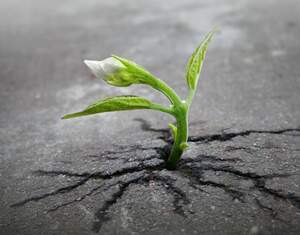

International Bagpipe Day
Observed
annually on March 10th (since 2012)
Dates
Founded by
Hashtags
Sources
http://www.bagpipesociety.org.uk/international-bagpipe-day/
https://celticlifeintl.com/a-brief-history-of-the-bagpipes/
https://www.amazon.com/dp/1598888587?tag=checkiday08-20
https://www.britannica.com/art/bagpipe
https://www.facebook.com/internationaldayofthebagpipe
https://www.internationalbagpipeorganisation.com/2012---london.html
https://www.internationalbagpipeorganisation.com/international-bagpipe-day.html
International Bagpipe Day celebrates the world's bagpipes and piping traditions. Local events are held all around the world on the day, including talks, lectures, conferences, concerts, gigs, school events, museum events, pipers' picnics, dances, folk bals, and ceilidhs. The "Great Bagpipe Convergence" is also part of the day, during which people go outside to play their bagpipes at noon local time, and then post a photo or video of their playing online.
The idea for International Bagpipe Day came to Andy Letcher while he was attending the Bagpipe Society's Blowout Festival in 2011. Then, Cassandre Balosso-Bardin came up with the idea for a bagpipe conference as a means to promote the diversity of bagpipes to the public. From her idea came the First International Bagpipe Conference, held on March 9 and 10, 2012, which was attended by scholars, musicians, and instrument makers from around Europe.
The Bagpipe Society, an organization in Great Britain that focuses on promoting bagpipe revival, launched International Bagpipe Day from the First International Bagpipe Conference. It was first held in 2012. The Bagpipe Society along with the International Bagpipe Organisation are behind the day each year. The International Bagpipe Organisation is the organizer of the International Bagpipe Conference, which is held biennially at a different location and is the flagship event for International Bagpipe Day on the years the conference is held.
There are very few sounds that are as distinct and recognizable as the continuous droning and legato tones that come from the blowing of a bagpipe. The main components of the bagpipe, which give it its sound, are the bag, chanter, and drones. The bag is usually made of animal skin or rubberized cloth. It is inflated either by having air breathed into it through a blowpipe or by using a bellows. Air can then be fed throughout the instrument to make the sound, by placing arm pressure on the bag. The bag allows sound to be continuous while giving players the chance to take breaths, as well as for several tones to be played at the same time.
The chanter, or melody pipe, has finger holes that let a player make notes to form melodies. The other pipes, called drones, may have single or double reeds. They play single, constant notes that accompany the melody. They are tuned with the chanter by lengthening or shortening their extendable joints. The pipes are in wooden sockets, or stocks, which are tied into the bag.
The instruments have long been associated with the Scottish Highlands, although they have come from many different places, and there are many variations of them. They have also been used in many different contexts. Initially, folk instruments, bagpipes have remained as such, but also have been used in battle, at parades, funerals, weddings, and royal occasions. They were probably first used by pastoral sheep and goat herders, who played them to pass time while watching their flocks. They made them with easy-to-come-by materials such as skin, bones, and reeds. These instruments would quickly decay, so there is no physical evidence of them.
Bagpipes may have been used for centuries before any record of them was made. Most believe they were invented in the Middle East, and that the sheep and goat herders that used them were in Mesopotamia. There is some indication that they were used in ancient Egypt. A Hittite wall carving from around 1000 BCE shows a form of a bagpipe, and they are mentioned in the Bible in the book of Daniel. A bagpiper is also possibly depicted on an Alexandrian terracotta figure from around 100 BCE.
From the Middle East, bagpipes likely traveled to Greece, where they were known as "askaulos," meaning "wineskin pipe." They are mentioned in one of Aristophanes's plays from about the fourth century BCE and appear in other Latin and Greek references from around 100 CE. After the Romans invaded Greece, the bagpipe was adopted throughout the Empire just as other Greek culture was. They were mainly used by plebeians, but even Nero was known to play one. They were also used by the Roman infantry, while the Roman cavalry used the trumpet.
The British Isles became the most popular home for bagpipes. Invading Romans may have brought them there, or they may have later arrived by trade. They were mentioned in English author Chaucer's The Canterbury Tales in the 1380s. Some think they were imported to the British Isle of Scotland from the Romans, while others believe they came from England, Ireland, or developed in Scotland on their own.
Original Scotland pipes probably had one drone, with a second drone likely added in the mid to late sixteenth century, and a third drone likely added in the early eighteenth century. Scottish Highlands bagpipes had two tenor drones and one bass drone. It was there that bagpipes became more popular than anywhere else in Scotland or the world. In the Highlands, players were influenced by Celtic legends as well as by the wild nature of their surroundings. The players held an honored position in their clans. There are references to Scottish Highland bagpipe players by the fifteenth century, who played at weddings and festivals and even replaced organists at church. During the mid-sixteenth century, at a time when bagpipe music was descendent through most of Europe, it was ascendant in the Highlands. The MacCrimmon Family did much to nurture its growth. A classical musical form that used the bagpipes sprang up there; it was called piobaireachd and predated the piano and its classical music by about a century.
Originally pastoral and festive, the military began using the bagpipe in the eighteenth century and accompanied it with drums. Battlefields were loud, so instruments were used to communicate. Bagpipers from clans—who were often at war with each other—would inspire soldiers before battle, and played during battles to signal movements, attacks, and retreats. When the Scottish uprising of 1745 failed, military training was banned. Thus, the bagpipe could no longer be used in this context anymore, although it was not banned for other uses.
In the Scottish Lowlands, pipers held important positions in communities. There were town pipers, and those who played dance music and songs at weddings, feasts, and fairs. The soft-sounding Scottish Lowland bagpipe was played from about 1750 to 1850; it had a bellows, and three drones in one stock.
When England and Scotland united in the early eighteenth century, bagpipes were brought all over the world to British colonies, to places such as Africa and Ceylon. In many places, there already were indigenous bagpipe-type instruments, which had been used for folk music and military purposes. Some examples are the tulum of Turkey, pilai of Finland, zampogna of Italy, mashak of India, mizwad of Tunisia, tsampouna of Greece, volynka of Russia, gaita of Macedonia, and the Bedouin habban. There are many variations of the bagpipe popular today, such as the cornemuse of central France, the aforementioned zampogna of Italy, and the Irish union pipe. The most popular is probably Scotland's Great Highland bagpipe. The blowing of all these kinds and more can be heard on International Bagpipe Day!
How to Observe International Bagpipe Day
Some ways to celebrate include:
- Take part in the Great Bagpipe Convergence. Head outside at noon and play the bagpipes. Post a photo or video online of you playing the bagpipes, such as on the International Bagpipe Day Facebook page.
- Attend or organize an International Bagpipe Day event. The possibilities are endless. Attend or organize a talk, lecture, conference, concert, school event, museum event, pipers' picnic, dance, folk bal, or ceilidh.
- Attend the International Bagpipe Conference, which takes place on or near today's date every other year.
- Join or learn more about the Bagpipe Society.
- Make plans to attend the Bagpipe Society Blowout Festival later in the year.
- Get yourself a new bagpipe.
- Listen to musical artists who feature a bagpipe or to bagpipe versions of popular rock songs.
- Read a book on the history of bagpipes or about Highland bagpipes.
- Visit the Musical Instrument Museum, the Morpeth Chantry Bagpipe Museum, or the International Bagpipe Museum.





















